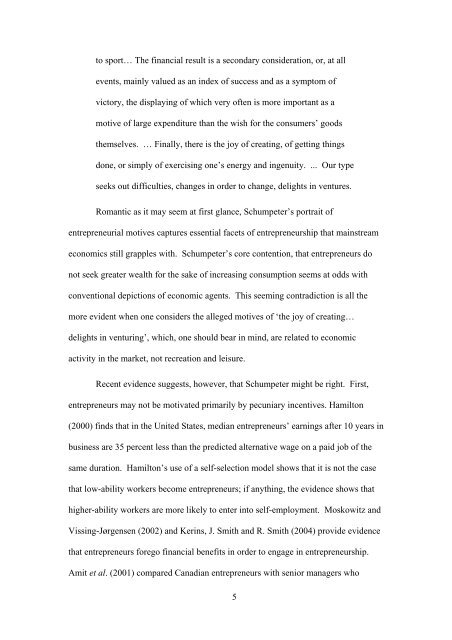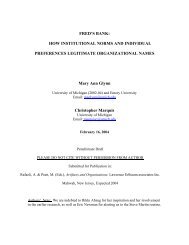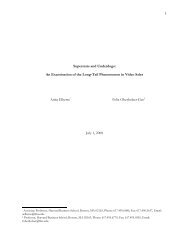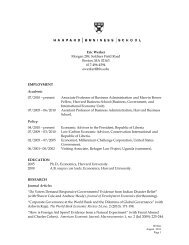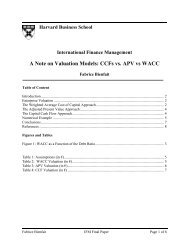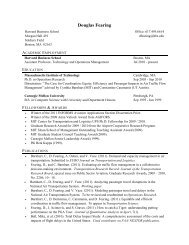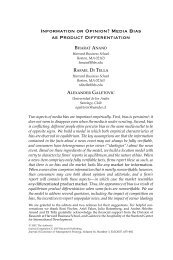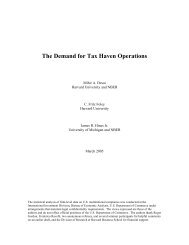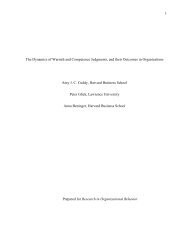Social Dimensions of Entrepreneurship. - People. hbs .edu ...
Social Dimensions of Entrepreneurship. - People. hbs .edu ...
Social Dimensions of Entrepreneurship. - People. hbs .edu ...
You also want an ePaper? Increase the reach of your titles
YUMPU automatically turns print PDFs into web optimized ePapers that Google loves.
to sport… The financial result is a secondary consideration, or, at all<br />
events, mainly valued as an index <strong>of</strong> success and as a symptom <strong>of</strong><br />
victory, the displaying <strong>of</strong> which very <strong>of</strong>ten is more important as a<br />
motive <strong>of</strong> large expenditure than the wish for the consumers’ goods<br />
themselves. … Finally, there is the joy <strong>of</strong> creating, <strong>of</strong> getting things<br />
done, or simply <strong>of</strong> exercising one’s energy and ingenuity. ... Our type<br />
seeks out difficulties, changes in order to change, delights in ventures.<br />
Romantic as it may seem at first glance, Schumpeter’s portrait <strong>of</strong><br />
entrepreneurial motives captures essential facets <strong>of</strong> entrepreneurship that mainstream<br />
economics still grapples with. Schumpeter’s core contention, that entrepreneurs do<br />
not seek greater wealth for the sake <strong>of</strong> increasing consumption seems at odds with<br />
conventional depictions <strong>of</strong> economic agents. This seeming contradiction is all the<br />
more evident when one considers the alleged motives <strong>of</strong> ‘the joy <strong>of</strong> creating…<br />
delights in venturing’, which, one should bear in mind, are related to economic<br />
activity in the market, not recreation and leisure.<br />
Recent evidence suggests, however, that Schumpeter might be right. First,<br />
entrepreneurs may not be motivated primarily by pecuniary incentives. Hamilton<br />
(2000) finds that in the United States, median entrepreneurs’ earnings after 10 years in<br />
business are 35 percent less than the predicted alternative wage on a paid job <strong>of</strong> the<br />
same duration. Hamilton’s use <strong>of</strong> a self-selection model shows that it is not the case<br />
that low-ability workers become entrepreneurs; if anything, the evidence shows that<br />
higher-ability workers are more likely to enter into self-employment. Moskowitz and<br />
Vissing-Jørgensen (2002) and Kerins, J. Smith and R. Smith (2004) provide evidence<br />
that entrepreneurs forego financial benefits in order to engage in entrepreneurship.<br />
Amit et al. (2001) compared Canadian entrepreneurs with senior managers who<br />
5


